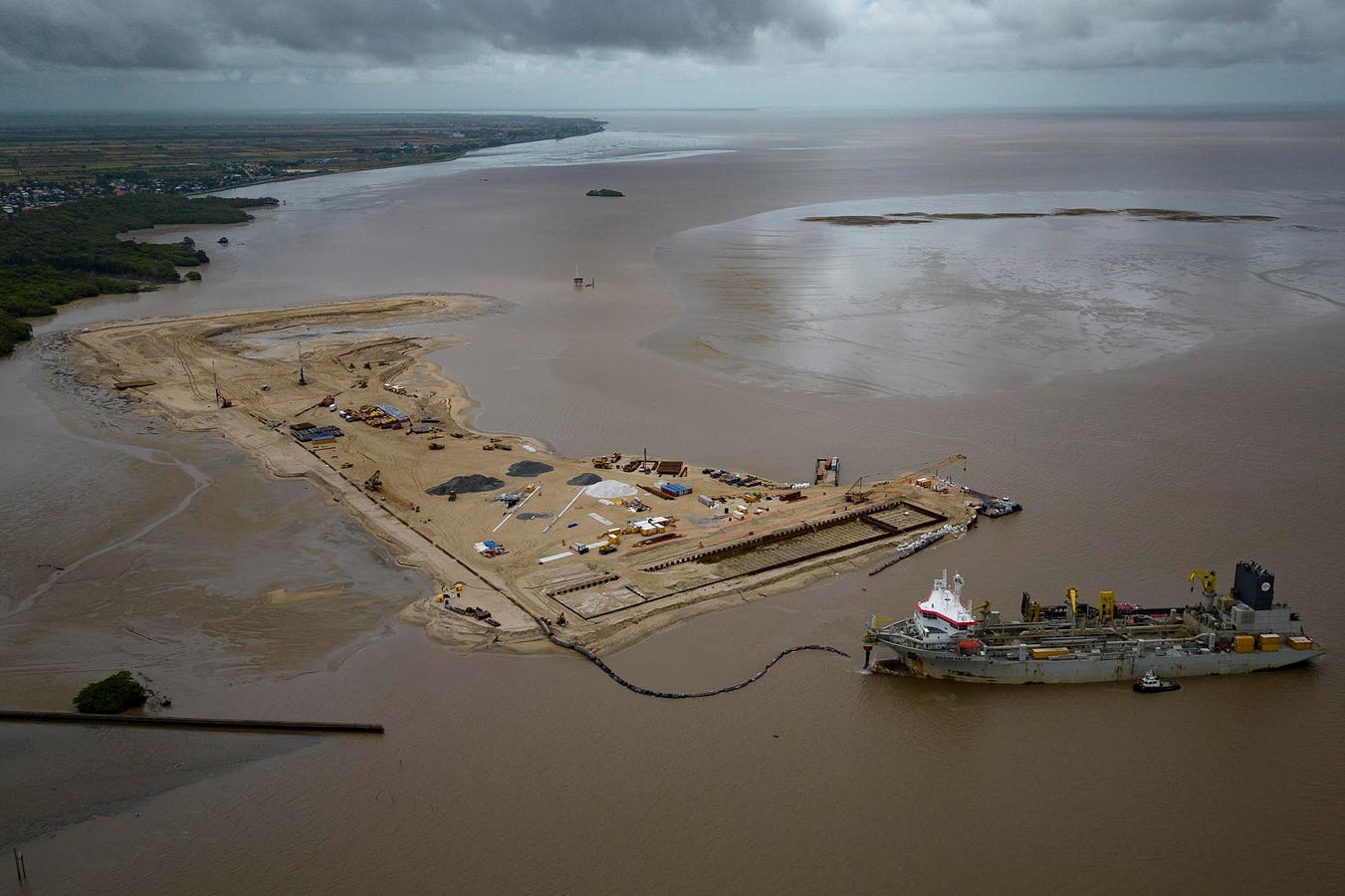On October 23rd, Chevron announced its acquisition of Hess for $53 billion. Its most prized asset: the Stabroek offshore oil block, near the coasts of Guyana. The area has become the epicentre of a new boom, as industry giants scramble for a cut in the action. In the last decade, more than 11 billion barrels of conventional oil and gas have been discovered.
Rival ExxonMobil
XOM
The recent discoveries off the coast of Guyana have already started to have an outsized effect on a small economy. It was once one of South America’s poorest countries, on par with Bolivia—in GDP per capita terms. Guyana has overtaken the region, and most of the growth has just taken place since 2020, after an early bump in 2005.
It remains to be seen to what extent wealth will “trickle down”, or if the booming economy will mostly be a godsend for the US and Chinese firms extracting the oil. In future years, an unequal outcome could see a movement of resource nationalists, as is common in neighbouring nations.
Oil booms and busts
Neighbouring Suriname and Venezuela tell warning stories, however. Their overreliance on black gold led to an impressive economic collapse. According to World Bank and IMF data, Suriname suffered a GDP per capita drop of around 60% between 2014 and 2020. In Venezuela, it was mixed with political conflict and US sanctions: the peak-to-trough drop—2013 to 2020—was near 70%1.
“Guyana should clearly avoid falling into the trap of the Dutch disease as it is seeing a sudden massive inflow of money out of its quick surge of oil production” said José Chalhoub, political and oil consultant at Venergy Global and Azur Global Consulting. “It will also have to assess the important geopolitical risks having important diverse oil companies from contesting countries like the US and China.”
Suriname nonetheless is looking towards a brighter future, as it offered bondholders a cut of future oil revenues in its debt restructuring deal. In exchange for taking a 25% haircut, creditors are promised a warrant of 30% of annual oil royalties if they surpass $100 million.
Venezuela muddies the waters
Guyana’s oil boom already has a nemesis: Venezuela claims two-thirds of its landmass, all that is west of the Essequibo River. The dispute goes back to colonial times, flaring up soon after Venezuela won its independence from Spain in the 19th century. Guyana inherited its position from the British Empire. The risk is not that Venezuela could fulfil all of its claims, but rather over delimiting territorial waters and exclusive economic zones.
On October 23rd, the Venezuelan government also presented the questions of a consultive referendum: the aim is to shore up support to press its claims on the Essequibo region. Critics have called this a diversion attempt by Maduro’s administration to focus on a unifying issue, with the backdrop of opposition primaries on October 22nd.
“Clearly, Caracas is trying to stir a unified nationalistic sentiment amid a critical moment for the government as it heads for presidential elections, and which for years didn’t take solid measures on this issue” argued Chalhoub. “The dispute also serves Georgetown to try to displace Venezuela as the main regional oil player.”
The Stabroek block2 lies in the middle of disputed territorial waters, as most sits across the land claimed by Venezuela. Exclusive economic zones are also a point of contention beyond the two South American countries. So far, Georgetown has largely been able to exert its claims effectively, as it is the one exploring and exploiting the offshore block.
A conflict is even playing out between ExxonMobil and Venezuela, since expropriations under late President Hugo Chávez, now involving the Essequibo dispute. In 2018, the Venezuelan navy intercepted an ExxonMobil exploration ship on disputed waters, as it was conducting seismic survey work. In 2019, the oil giant banned the use of any ship that had visited Venezuelan ports, going over and beyond existing US sanctions.
A poor and isolated Venezuela is having to face off against not just Georgetown, but a firm CARICOM and US. However, what could happen if Caracas fully normalises ties with Washington DC, and once again provides subsidised oil to the Caribbean—as it did with the Petrocaribe venture? Already the alliance showed its gratitude in 2017, blocking a proposal by US-aligned countries to intervene in Venezuela.
Chevron
CVX
The historic region of the “Guyanas” (or Guianas, take your pick) is becoming a hotspot for conventional oil and gas. On land and sea, from Suriname to Venezuela’s Orinoco Belt. This category of fossil fuels needs large, long-term investments, the kind that need security and stability the most. Oil giants from the US, China, and Europe are already scrambling.
Read the full article here





